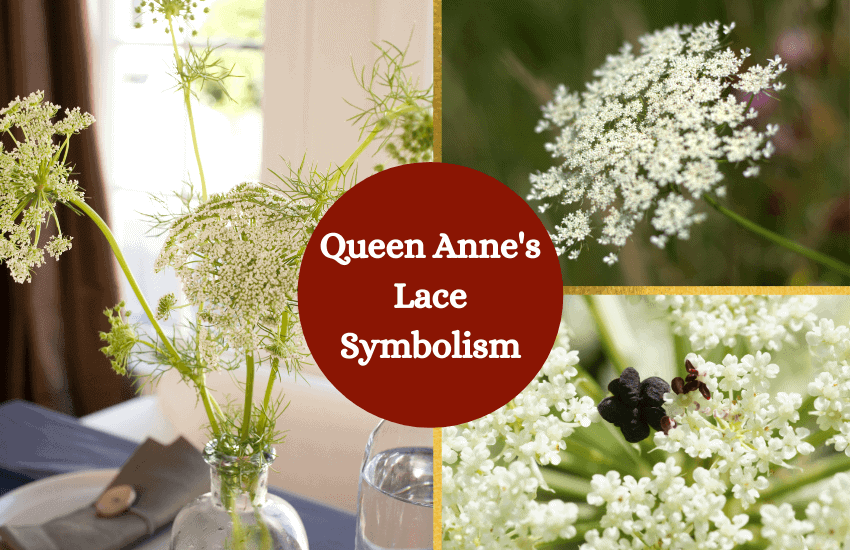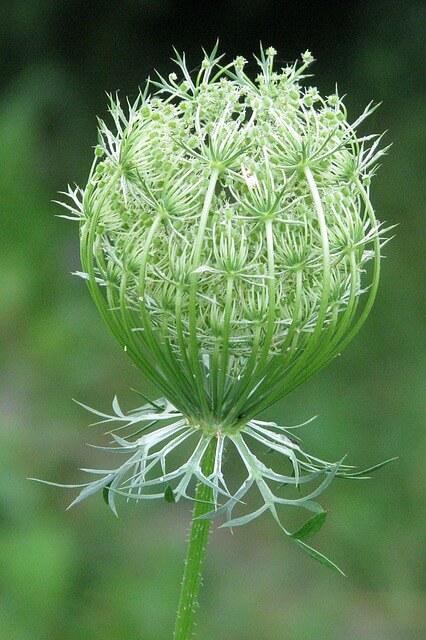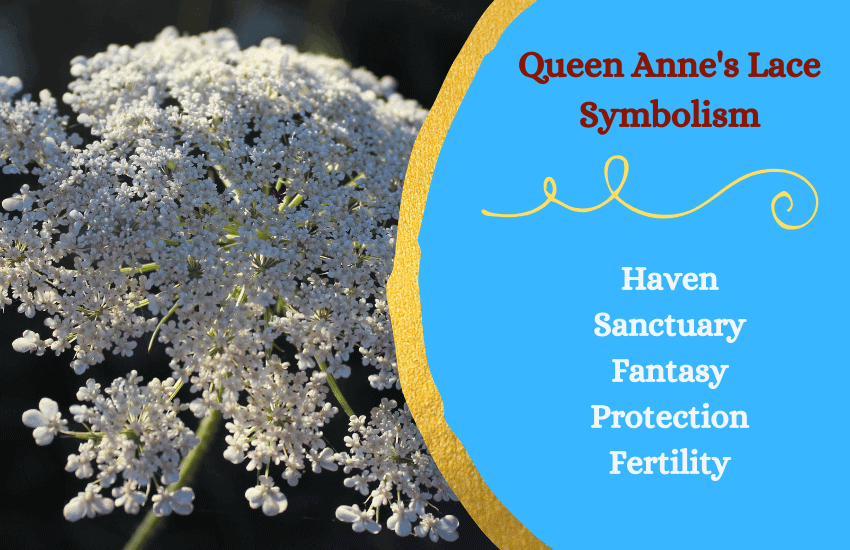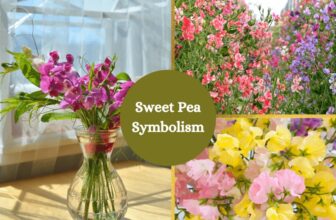
Table of Contents
One of the dreamiest flowers you can have in your garden, Queen Anne’s lace features umbrella-like blooms, a favorite among butterflies and bees. Here’s how this flower gained a royal name, along with its significance and practical uses today.
About Queen Anne’s Lace
Native to northern Europe and Asia, Queen Anne’s lace is the wildflower herb from the Daucus genus of the Apiaceae family. Usually they’re found in meadows, fields, waste areas, along roadsides and dry lands. They typically bloom from late spring until mid-fall and grow about 4 feet in height. In some regions, they’re regarded as an invasive weed and a threat to recovering grasslands.
Botanically, these flowers are called Daucus carota or wild carrot—and are a relative of the root vegetable, D. carota sativus. In the past, the roots of Queen Anne’s lace were used as a substitute for carrots. It’s said that their stems and leaves smell like carrots when crushed. While its culinary cousin has large, tasty roots, Queen Anne’s lace has a small woody root, especially when its flowers have already bloomed.

Queen Anne’s lace flower heads have a beautiful lace-like pattern, consisting of tiny, creamy white blossoms and sometimes a dark red bloom at the center. However, the ‘Dara’ variety flaunts its pink and burgundy hues with fern-like leaves. When their flowers fade, they curl up into a bird’s nest-like clump, hence it’s also called the bird’s nest plant.
- Interesting Fact: It’s said that Queen Anne’s lace smells like carrots, but it shouldn’t be confused with the roots of hemlock, the Conium maculatum, and of fool’s parsley, the Aethusa cynapium, which smell disgusting and is extremely poisonous.
Myths and Stories about Queen Anne’s Lace
The wildflower was named after Queen Anne of England, but it’s unknown which Anne the legend refers to – Anne Boleyn, Anne Stuart, or the Anne of Denmark. The story goes that the queen was an expert lace maker, and had an affinity for the wild carrots in the royal garden because of its lacy appearance.
One day, she challenged the ladies of the court to a competition to see who could create the most beautiful pattern of lace as lovely as the wildflower. As a queen, she wanted to prove that she was the best of them all. It’s said that Queen Anne created her handiwork using the finest threads and needles, while her competitors made use of wooden bobby pins and coarse threads.
However, she pricked her finger with a needle, and a drop of blood stained the white lace she was sewing. The drop of blood on her creation perfectly matched the red dot at the center of the flower, so she was declared the winner of the competition. Since then, the wildflower with a speck of red became known as Queen Anne’s lace.
Meaning and Symbolism of Queen Anne’s Lace

Queen Anne’s lace is associated with various symbolism. Here are some of them:
- A Symbol of Fantasy – Queen Anne’s lace boasts its dreamy and delicate lace-like appearance, making it associated with beauty spells. In the past, it had been incorporated in ritual baths, in hopes of attracting love and fulfilling one’s fantasy.
- “Do not refuse me” – The flower has been used to signify the purity of intentions in magic spells. There’s even an old superstition that says that if the wildflower is planted by a woman who is true to herself, it will thrive and bloom in the garden.
- Haven and Sanctuary – Sometimes referred to as the bishop’s flower, Queen Anne’s lace is associated with safety and refuge. On the other hand, the curling of their flower heads is often likened to a bird’s nest, which reminds us of the love and commitment it takes to build a happy home.
- In some contexts, Queen Anne’s lace is also associated with lust and fertility. Unfortunately, it also has a negative connotation and a terrible name – devil’s plague. This comes from a dreadful superstition, which says that picking and bringing the wildflower to someone’s home will bring death to his or her mother.
Uses of Queen Anne’s Lace throughout History
For centuries, the wildflower has been used in a variety of ways, including in medicine, for cooking and in rituals.
In Medicine
Disclaimer
In an Old English superstition, the red floret at the center of Queen Anne’s lace was believed to cure epilepsy. Back in the day, seeds of Queen Anne’s lace were utilized as a natural contraceptive, an aphrodisiac and a remedy to colic, diarrhea and indigestion. In some regions, it’s still used as a diuretic for treating urinary tract infections, including kidney stones, water retention, bladder problems, as well as joint pain.
In Gastronomy
It’s thought that the ancient Romans ate the plant as a vegetable, while the American colonists boiled its roots in wine. Also, teas and infusions were made from the herb and the roots were roasted and grounded for making coffee.
The roots of Queen Anne’s lace are edible when young, which can be added to soups, stews, savory dishes and stir-fries. The oil from Queen Anne’s lace is utilized for flavoring beverages, baked goods, candies, gelatins and frozen desserts. In some regions, its flower heads are even fried and added to salads.
Queen Anne’s Lace in Use Today
Queen Anne’s lace is ideal for cottage gardens and wildflower meadows, but they also make excellent, long-lasting cut flowers. Its beautiful lace-like pattern will complement any bridal dress, making them a romantic flower of choice in bouquets and aisle decor. For rustic weddings, Queen Anne’s lace can be used as an alternative for greenery.
As table decor, the wildflower will add interest to any aesthetic. Just place them in wine bottles, jars and vases, or incorporate them in showstopping floral arrangements. If you love arts and crafts, use dried Queen Anne’s lace for scrapbooking, making bookmarks and greeting cards, as well as home decorations. Their blossoms are dreamy and dainty, which are also ideal for resin-made jewelry and keychains.
When to Give Queen Anne’s Lace
Since these flowers are associated with royalty and queens, they’re a romantic gift for the queen of your heart on her birthday, as well as on anniversaries and Valentine’s Day! For Mother’s Day and baby showers, Queen Anne’s lace can be incorporated into bouquets with other traditional blooms, including carnations, roses and tulips.
In Brief
Queen Anne’s lace’s lacy, white flower clusters add beauty to the fields and meadows during the summer season. This wildflower is the perfect addition to floral decorations and bouquets for a touch of the bohemian and the rustic.








